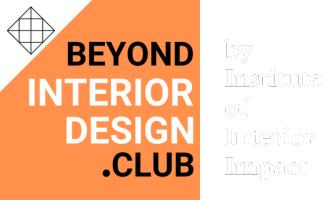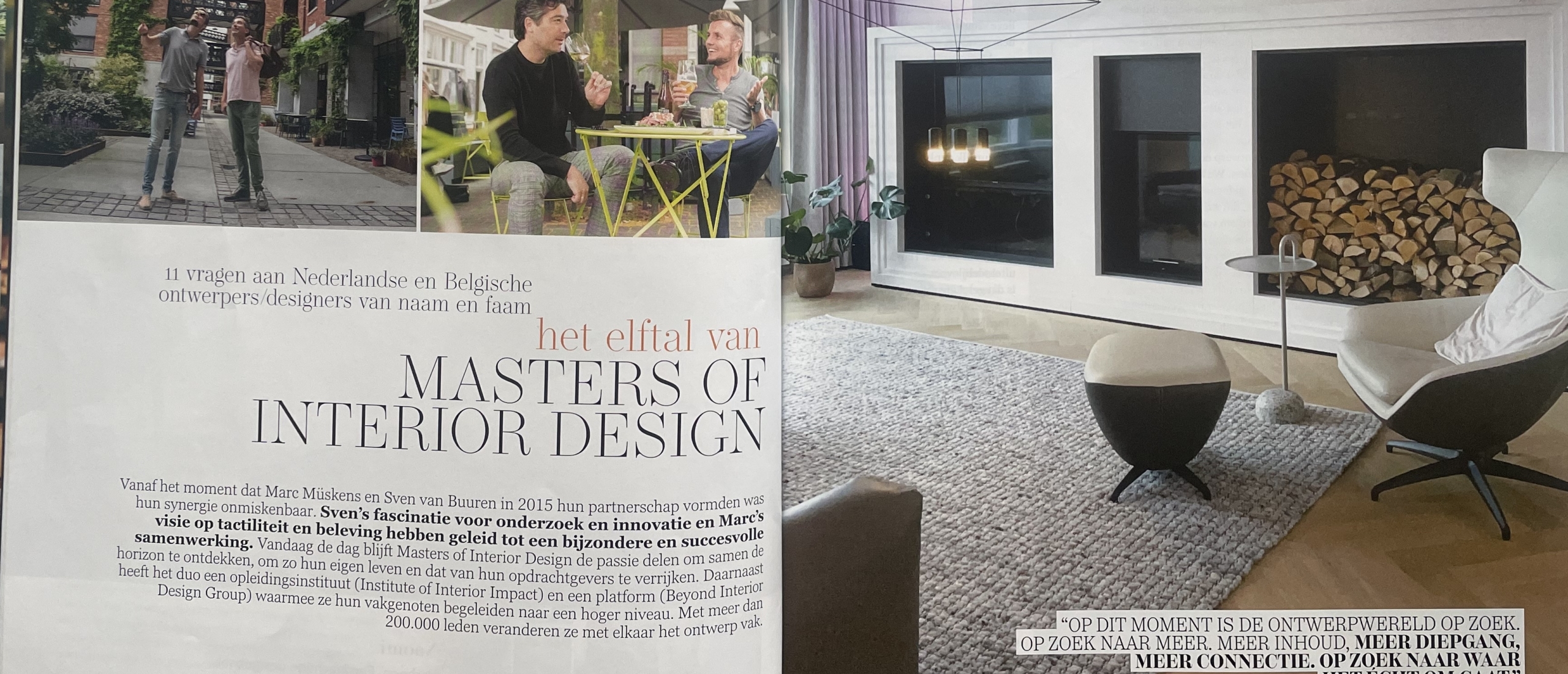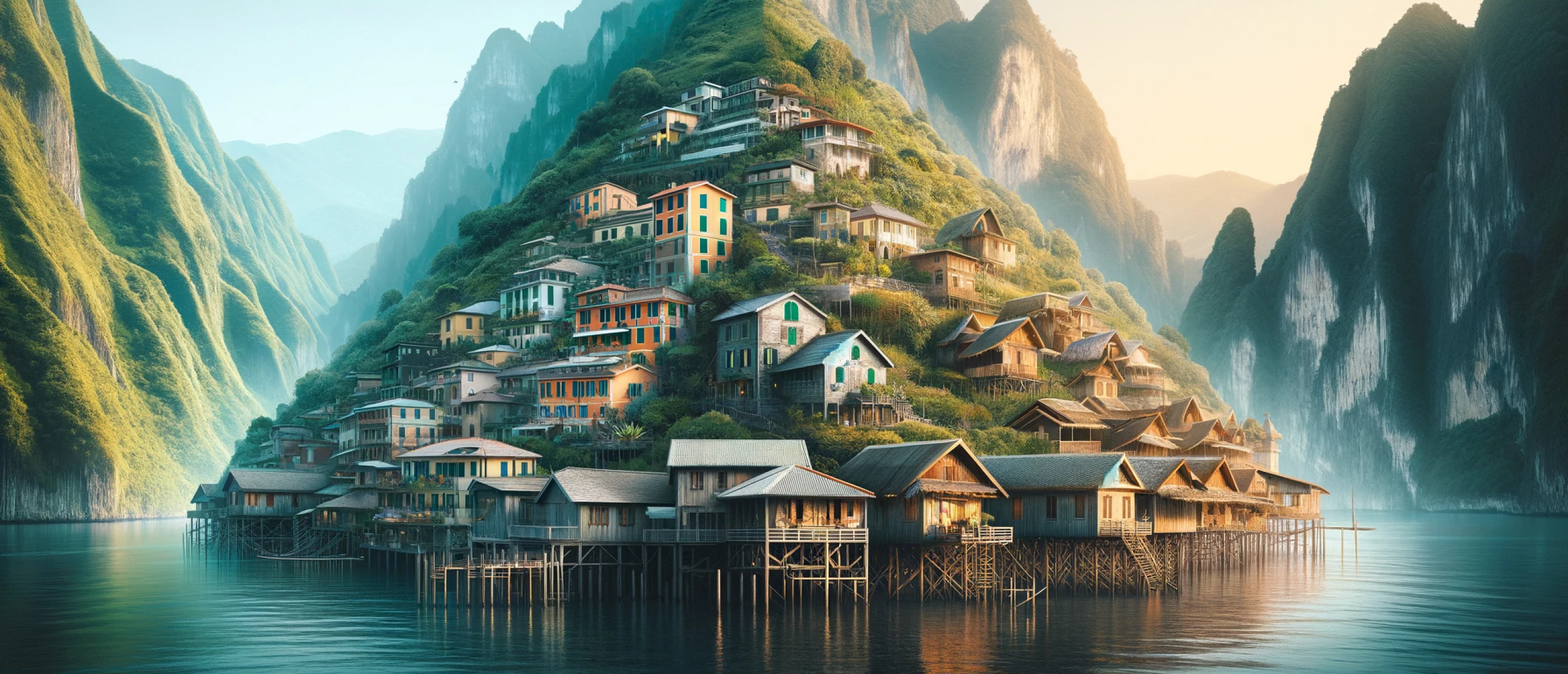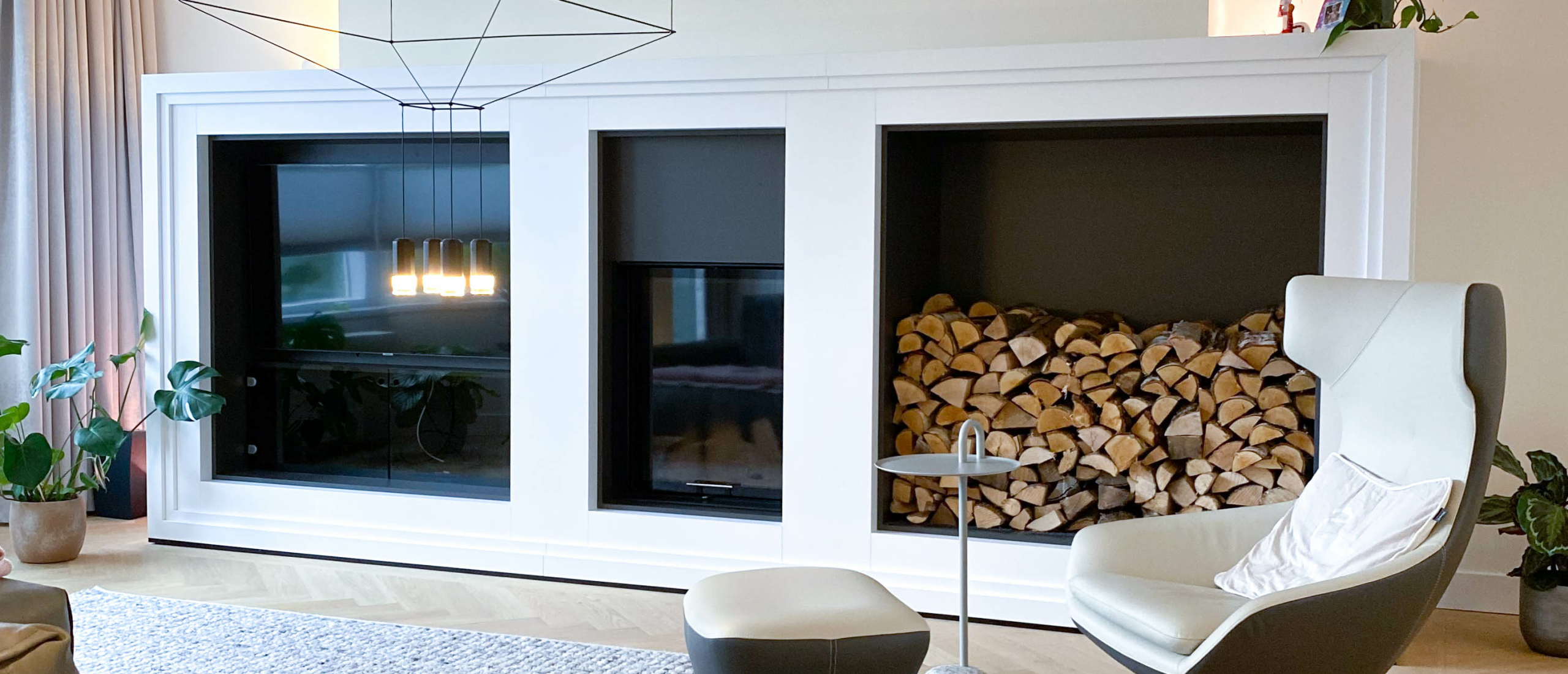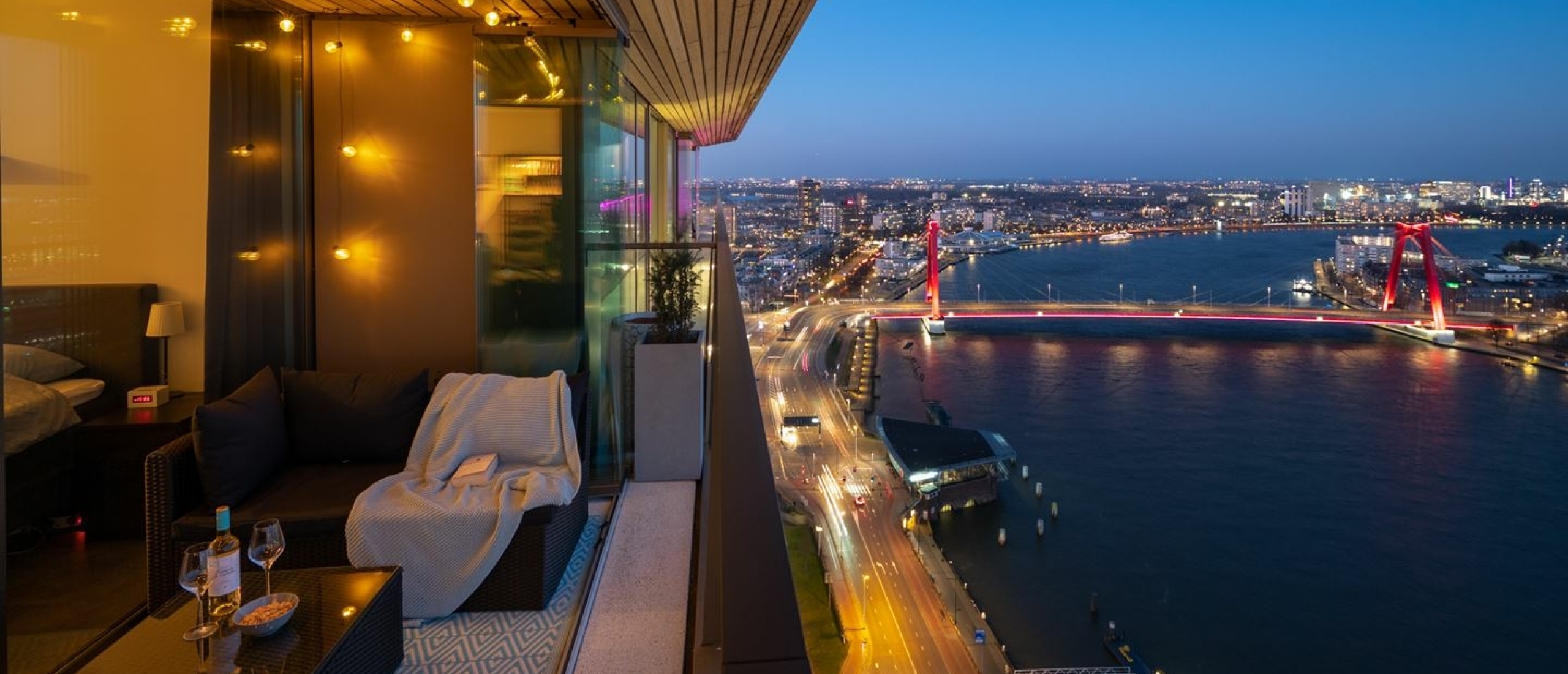 Step into the limelight with us as we share the story of our transformative voyage in the realms of interior design, recently spotlighted in "Interior Business Magazine". Sven van Buuren and I are at the helm of Masters of Interior Design, unveiled their secret sauce to concocting spaces that whisper stories and evoke emotions.
Step into the limelight with us as we share the story of our transformative voyage in the realms of interior design, recently spotlighted in "Interior Business Magazine". Sven van Buuren and I are at the helm of Masters of Interior Design, unveiled their secret sauce to concocting spaces that whisper stories and evoke emotions.
Our design mantra? "Beyond aesthetics, every room is a chapter of a living story." This conviction is our guiding star in mentoring the avant-garde designers at our Institute of Interior Impact and the Beyond Interior Design Group.
Dive into the article for a sprinkle of creativity, a dash of collaboration, and a generous helping of inspiration that's shaking up the design world. We invite you to revel in the symphony of art, empathy, and ingenuity that dances through our work.
For the full scoop on our design journey and principles, catch our feature in the magazine in Dutch here, or read the English translation below.
Come, let's sculpt stories in spaces together!
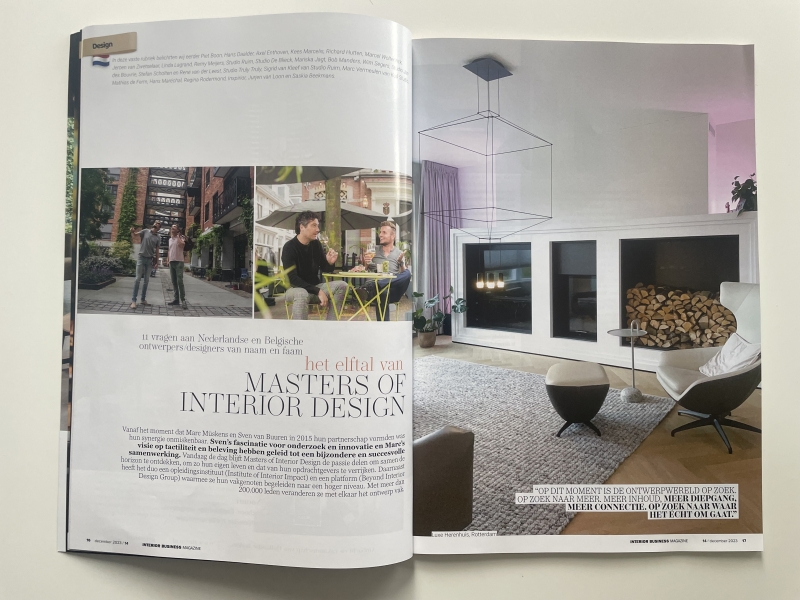
English translation Interior Business Magazine The Eleven of…
In this recurring section of Interior Business Magazine we ask 11 Questions for Renowned Interior Designers. Previous spotlights have included: Piet Boon, Axel van Enthoven, Marcel Wolterinck, Richard Hutten, Jeroen Zwetselaar, Linda LaGrand, Remy Meijers, Bob Manders, and Studio Jan Des Bouvrie.

From the moment Marc Müskens and Sven van Buuren formed their partnership in 2015, their synergy was unmistakable. Sven's fascination with research and innovation, combined with Marc's vision of tactility and experience, led to a unique and successful collaboration. Today, Masters of Interior Design continues to share the passion to explore new horizons, enriching their own lives and those of their clients. Additionally, the duo has established an educational institute (Institute of Interior Impact) and a platform (Beyond Interior Design Group), guiding their peers to a higher level. With over 200,000 members, they collectively transform the design profession.
What made you decide to become a designer?
Marc: Saturday nights in 1995. I had already put on my pajamas, the bowls of paprika chips were ready, and the glasses of cola were filled. Together with my parents and brother, I was all set. This was the highlight of my week: TV Home Magazine. What would Jan des Bouvrie come up with and create today? He took his black marker and began sketching in his white book, and in full suspense, I couldn't wait to see how the design would come to life. It was so magical! I wanted to do this too!
Sven: As a child, I also always watched TV Home Magazine, and at home, there were always stacks of interior magazines and books where I could disappear for hours. I was always drawing and designing, whether it was a house, a city, or a car, I could handle it. My grandfather, a contractor, saw that and arranged an old drawing table from a friend architect for me. It was so big and heavy that it almost collapsed through the floor of my bedroom. But I was so happy with that drawing table! It wasn't clear to me at that time that I wanted to become an interior designer. I just wanted to design, no matter what. But when, at the age of 17, I was allowed to design caravans for a Dutch caravan manufacturer, I realized that I could really do this. The entire caravan world suddenly paid attention to what I had come up with. I had made the layout more beautiful and smarter, but also simplified and cheaper in production.
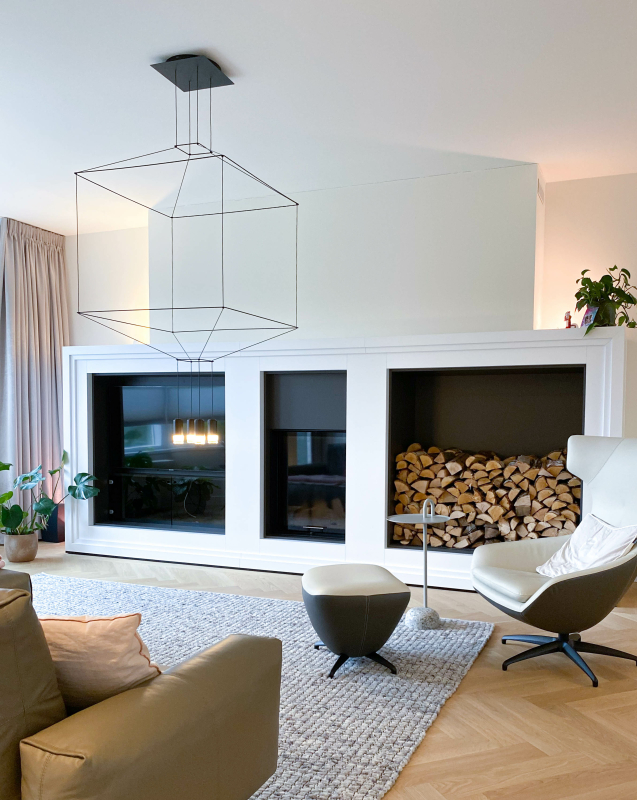
According to you, what are the characteristics of a successful interior design?
Marc: 'Creating beautiful pictures' is not enough nowadays. Especially since we know that a well-thought-out interior can contribute in so many ways to more happiness and success in your life. That's why we believe that no matter how you want to realize your living wishes, the most important thing is not 'how' it should look, but 'why' the interior design should look that way. We are so focused on that perfect end picture in our industry that we sometimes completely overlook what it's really all about.
Sven: Our approach is therefore different from the traditional approach in interior architecture. No long design processes that take months, no version 14.2 or even 27.3. That's because we involve our clients from step 1 in the design process. They call it the ultimate co-creation, and that's how we see it too. The result is a profound, highly personal interior design that is tailored to their ultimate lifestyle. And, of course, it will also be beautiful!
What was your first design that you thought, "this is a good design"? And why? What was a design that you later thought, "I should have done that differently"?
Marc: When I started my own business in 2008, I was fortunate in the first year to be able to design and realize a complete city apartment. To this day, the interior has remained unchanged. At that time, the man had just lost his wife, and a few months later, after the completion, he met a beautiful, kind woman. She had not only fallen for him but also for his beautiful new apartment. He thanked me warmly for that. It's fantastic how you can literally shape someone's life in this way! These are the moments for which I do it all. Of course, you sometimes think to yourself that we should have done it differently. Usually, we didn't have the skills to explain to the client that this design was really the best for them. Then they would ultimately choose the safe route. Fortunately, that is different now with our current design methodology.
Sven: It might sound very arrogant, but I can't imagine a project that we should have done differently. Precisely because we involve our clients so much in the design, the result is always there. And it continues to suit them. What did go wrong once is that we couldn't agree with a client. Both partners didn't agree on what they wanted. Those particular clients divorced a few months later. That is unique. Finding the common ground is what makes our profession so beautiful.
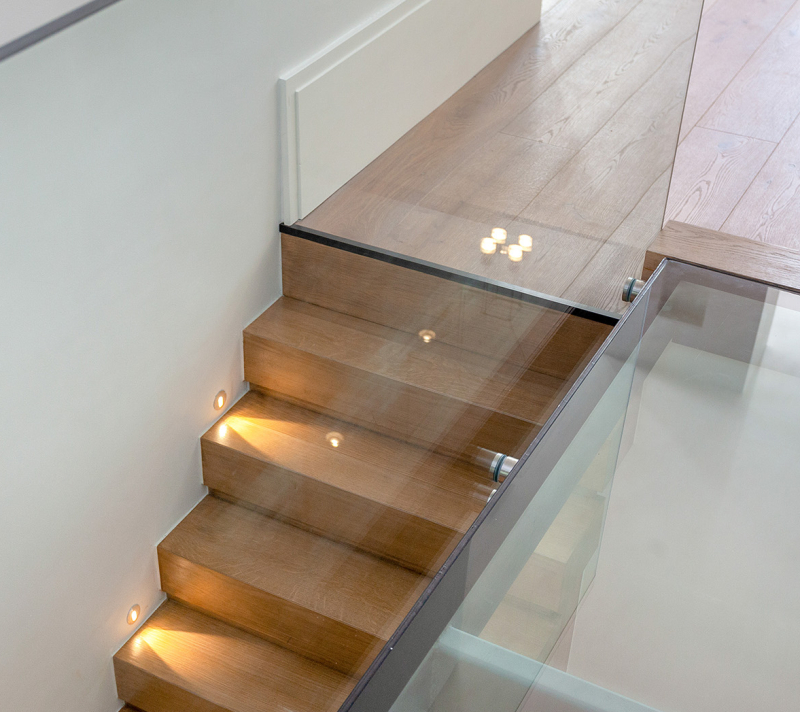
Which spaces do you prefer to design? And which space have you not designed yet and would like to design?
Marc: Our focus is on individuals, complete houses, or luxury apartments. If we get the question, or we see, that we can offer beautiful living solutions that can make our clients' lives even more beautiful and enjoyable, we're in! Because what good is a beautiful house if it doesn't work? This can be about the morning rush in the kitchen or the new utility room that can solve all frustrations and energy leaks in a family. And yes, of course, it will also be beautiful! On my bucket list are private vacation homes. I have something with the leisure sector, perhaps because of my background in hospitality and tourism. But yeah, a private retreat, where completely different elements determine the quality of such a place; it seems wonderful to dream about it with a client. An absolute guilty pleasure would be to give a makeover to one of those famous bungalow parks in the Netherlands. With a few small interventions, I could easily transform them.
Sven: You know, I like every space to design. As long as there's something to solve. A garage for a car enthusiast, that sounds good to me!
How does the creative collaboration with a client generally unfold?
Marc: 'Living On Your Own Terms' is prominently displayed on our website. Since we communicate this promise, because that's what it is, we have very meaningful collaborations. Simply because everyone in our team, including our clients, knows what the ultimate outcome should be. That's why I'm always so grateful, and sometimes surprised, about the enormous openness and trust we receive. It's amazing how personal stories that can start with a mirror can influence all subsequent design choices. If you don't like people, you better choose another profession.
Sven: With our approach, you literally crawl into the skin of the client for a few weeks. Almost like an actor, you take on the role of the resident. How would he or she live with the family? What choices would they make? It's quite intense. But apparently something we're very good at.

Which materials or brands do you prefer to work with and why?
Marc: We are not brand or material-bound at all. So much so that sometimes we have wall lamps from the hardware store for €19.95 hanging at high-end clients. "I told you we design on the 'terms' of our clients." That's what you're a designer for, right? Besides: everyone has a budget. But if big brands are appreciated, we'll go all out. It depends on which aspect of an interior the most value is attached to. That's why I would never want to have a furniture store. No idea what we would put in it. Every client is looking for something else, but in the meantime, they all want the same thing: a place where they can do what they want and where the items they find beautiful and important are. That's exactly what we create.
Sven: I agree with Marc. It's not about what we prefer but what our client prefers. Personally, I do like to choose pure - real - materials.
How have you seen the role of an interior designer change in recent years?
Marc: Unfortunately, our profession - especially for the outside world - still too often revolves around trends, consumption, what I always call "the next new shiny object." But making beautiful pictures alone is no longer enough. At the moment, the design world is searching. Searching for more. More content, more depth, more connection. Searching for what it's really all about. It seems like we all want to make the world better and more beautiful. And that's good news! Something needs to change.
Sven: We live in a time of rapid technological changes. They follow each other at a rapid pace. Look at how many people were needed fifty years ago to achieve the same level of interior design as today. Technology has taken a big part of our work out of our hands. That means that we as interior designers have gotten a completely new role. We have become the communication link between the dreams of our clients and the technology that does more and more for us. Especially with the rise of AI and VR.
Who has influenced your work so far? Who are your sources of inspiration?
Marc: As I said, my childhood hero was Jan des Bouvrie. Not so much because of his style but the vision with which he put our beautiful profession on the map in the Netherlands. You can find inspiration anywhere. I love photography, so if I get the chance, I grab my iPhone and capture what I want to remember. It can be anything. Usually, it's about moments. When the light falls very beautifully, an unusual scenario, and oh yes... fluttering curtains! That always releases a happiness substance in me.
Sven: Those have mainly been architects. For example, Carlo Scarpa, Mario Botta, and Glenn Murcutt. The first two create magic for me. Botta with very simple forms, while Scarpa almost dances with the details. Murcutt because he involves the environment in his designs to the extreme. He camps on-site for a year to make a design, to experience all seasons.
Which other (interior) designer would you like to collaborate with and why?
Marc: In our podcast Beyond Interior Design, I recently spoke with Steve Griggs. A true entrepreneur and currently a premium landscape designer in New York. I think we can learn a lot from him. He is a hard worker, 'no B.S.,' and has big projects to his name. It would be fantastic to collaborate with such a man to fully align architecture and the garden.
Sven: With our platform 'Institute of Interior Impact,' I am fortunate to work with so many interior designers from all over the world. Especially on their business. I find that really fantastic.
What do you see as a prevailing trend in interior design at the moment?
Marc: AI tools give us a completely different view of a new world. Natural organic forms are thoroughly explored to break with what we already know. Precisely because everything is happening so fast now, we see that people want to 'reconnect' with themselves, with nature, with the things in life that really matter. A very good trend, if you ask me.
Sven: I agree with Marc.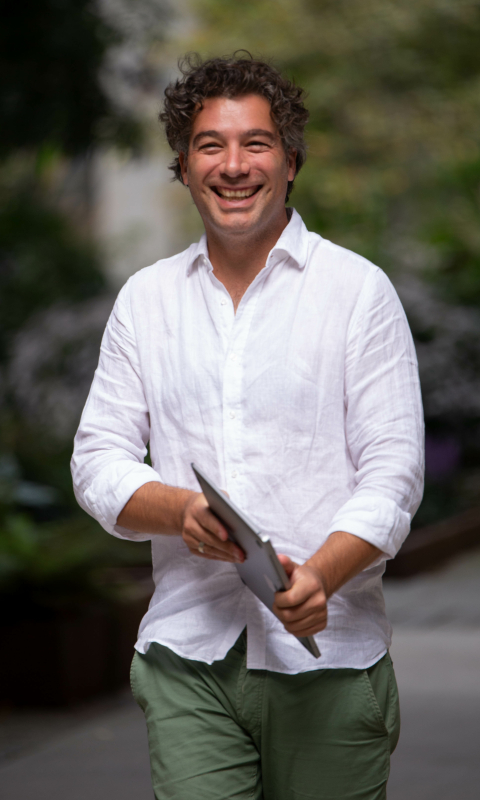
What are your ambitions as an interior designer for the coming period?
Marc: In addition to our design agency, we founded 'Institute of Interior Impact' three years ago. There we mentor experienced interior designers to take their business to the next level. We now have a global community of almost 210,000 professionals, and the growth seems unstoppable. We see that the design world is looking for more meaning. Designs based on intuition, emotion, association, memories, a personal emotional world. And this can go against all trends. Again in line with "Living on your own terms," of course. That's why we call this movement 'Form Follows Meaning.' This is our belief, our design religion. I will probably never be able to miss real designing, but 'Institute of Interior Impact' has so much potential and gives so much satisfaction that I will probably never let it go.
Sven: That's correct. But I notice that we are now increasingly selecting the 'gems.' The really fun projects. Through Institute of Interior Impact, we have also chosen to do a limited number of design projects per year.
